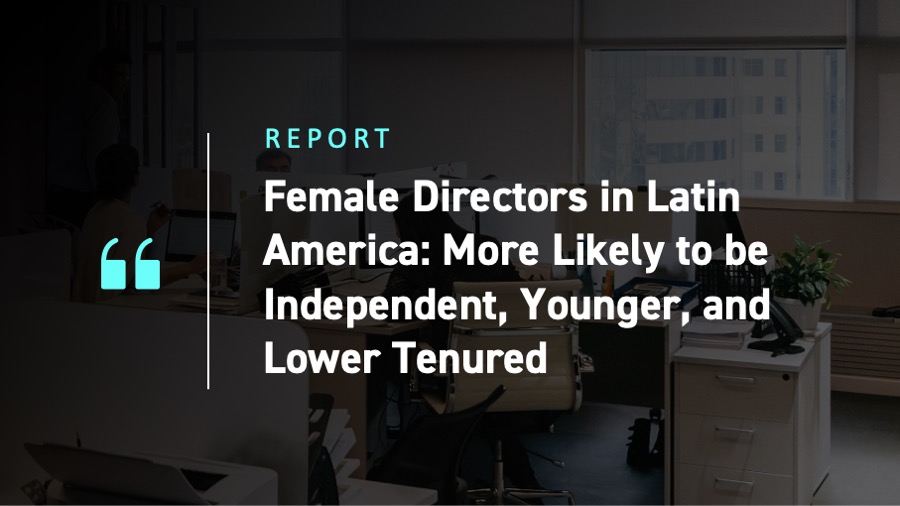This paper seeks to analyze the profile of female directors in publicly-traded companies covered by ISS in Latin America. While the overall number of female directors remains low in the countries covered by this paper (Argentina, Brazil, Chile, Colombia, Mexico, and Peru), ISS data shows that female board members in Latin America are, on average, younger, have lower tenures, and are more likely to be classified as independent than their male counterparts. This general profile of female directors is consistent across all six main Latin American markets analyzed by ISS in the region.
Female Participation on Boards
Based on data available as of July 2024, there are 4,082 directorships among the 486 Latin American companies analyzed for this paper. From these, 655 directorships, or approximately 16 percent, are held by women. Around 71 percent of such female directors are serving at companies in Brazil and Mexico, the two largest markets in the region.
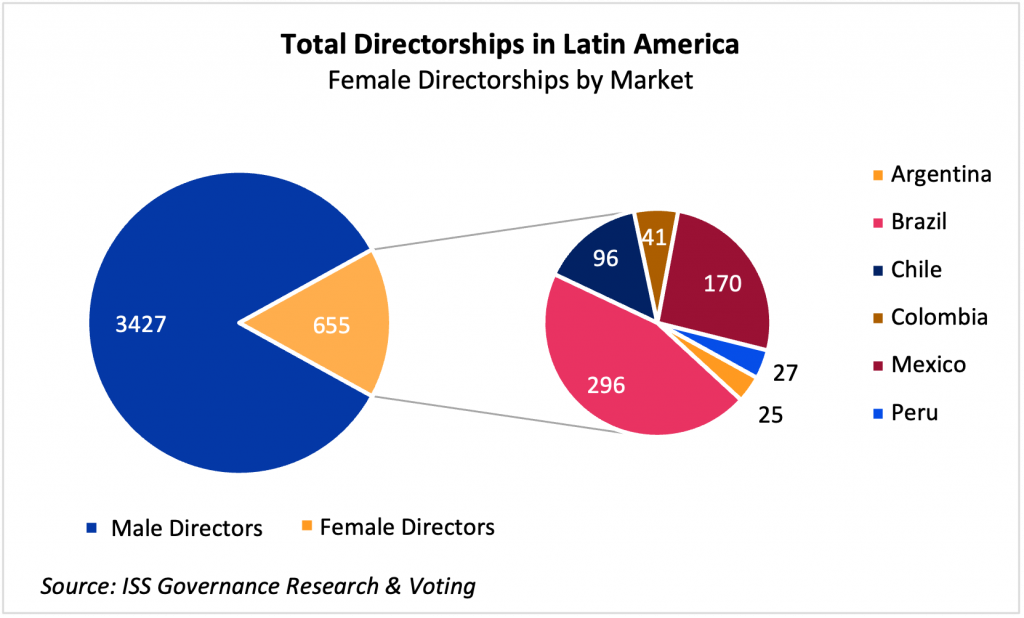
Director Independence
Looking closer at the directors’ profiles, female board members, on average, exhibit significantly higher rates of independence than male directors. Across the region, approximately 56 percent of female directors are classified as independent according to ISS’ board independence criteria, compared to 35 percent for male directors.
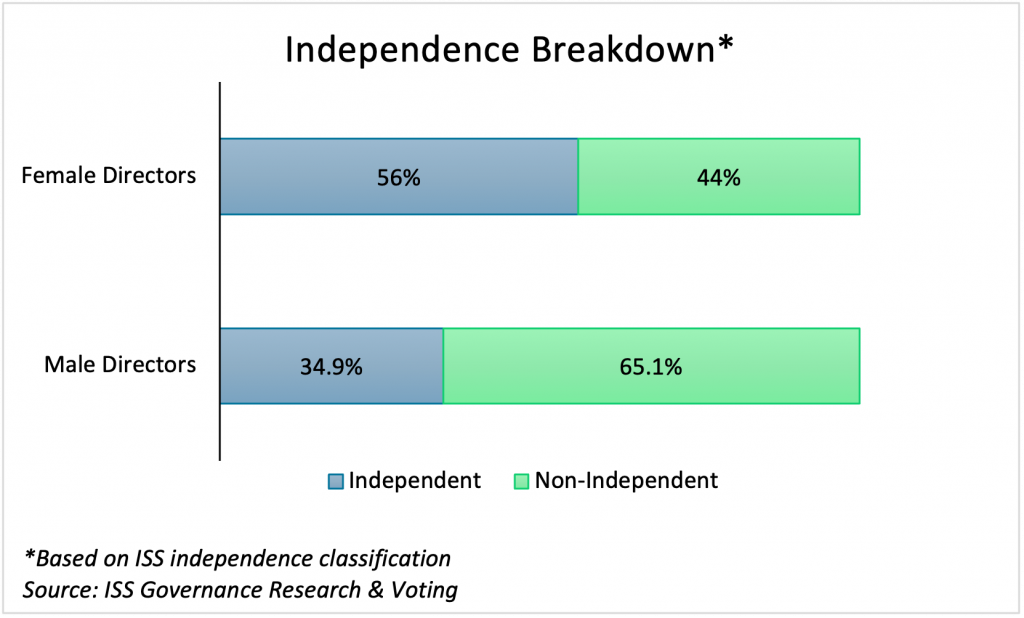
The gender gap in independence is consistent across all six main Latin American markets covered by ISS, as illustrated in graph below. Notably, in Chile and Peru, female directors are more than twice as likely to be independent than their male peers.
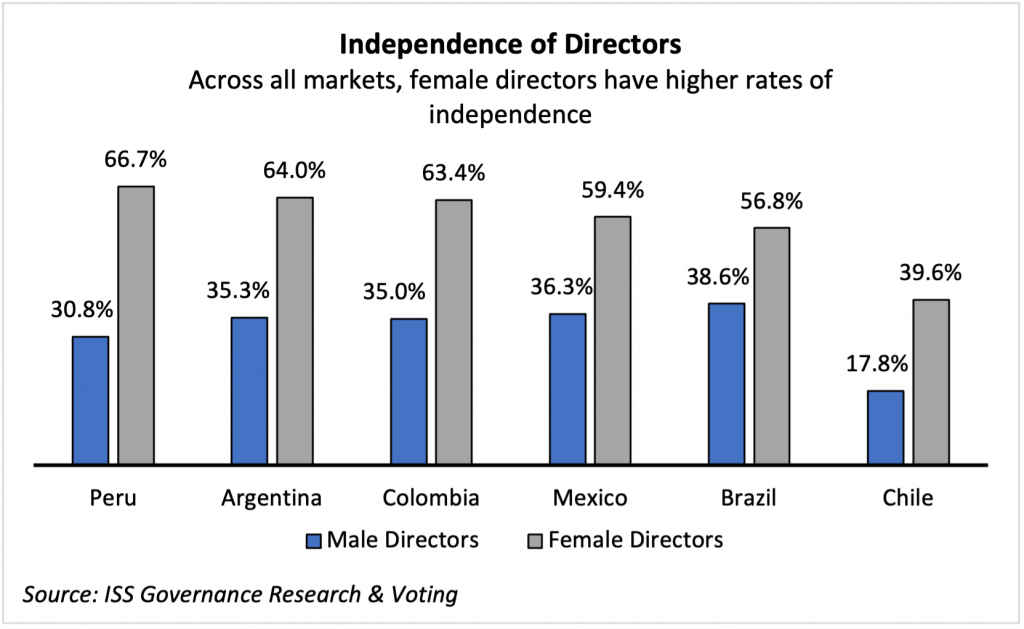
Age and Tenure Gaps
On average, female directors are younger than male directors; the median age for female board members in Latin America is 55 years old, compared to 62 years for male directors. Moreover, around 69 percent of female directors are under the age of 60, while 43 percent of male board members fall into this age group.
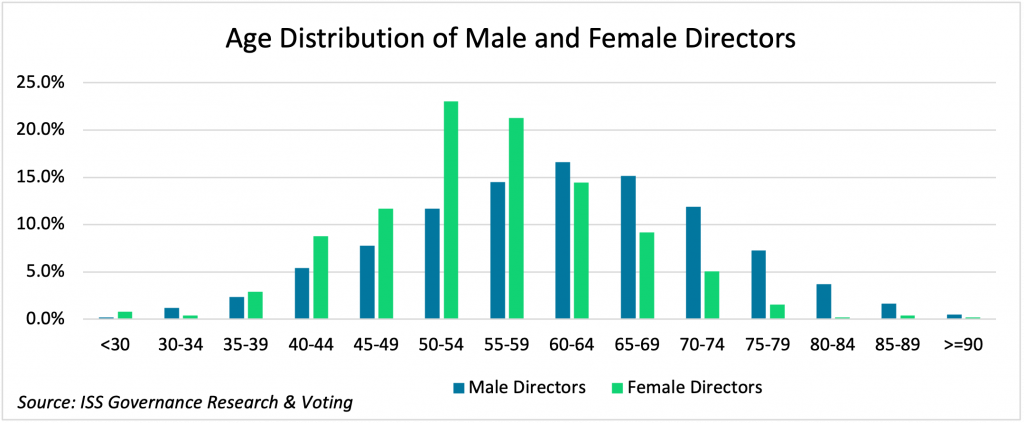
When broken down by country, the age gaps hold true for each of the six main Latin American markets. In the most extreme case, as illustrated below, the median age for male directors in Mexico is 9.5 years higher than the median age for female directors. On the other end of the spectrum, the gap between male and female directors in Colombia is 3.5 years.
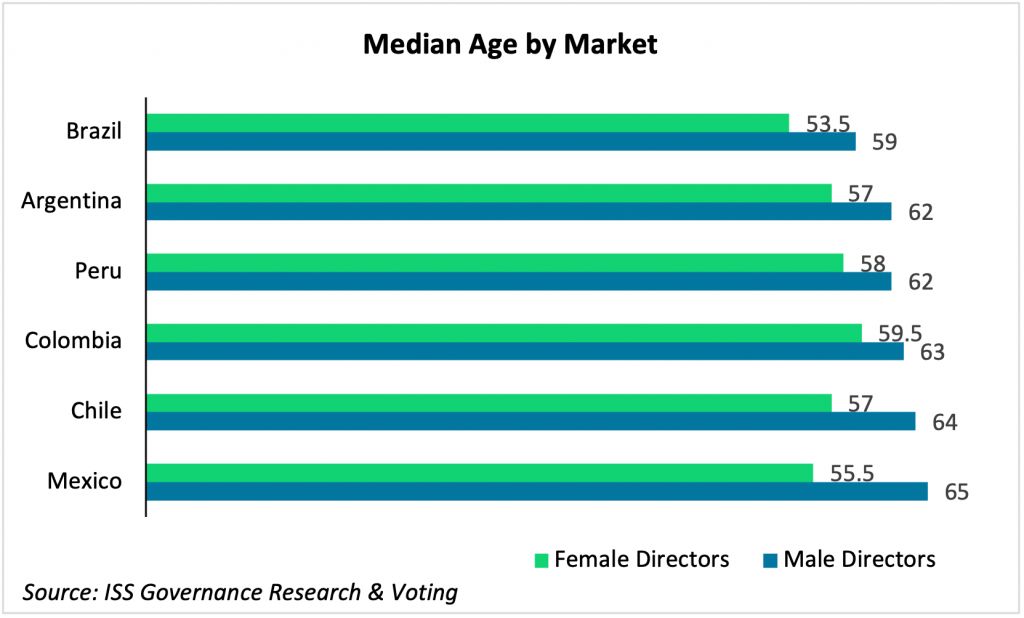
Given the modest increase in female participation on boards in recent years, it is not surprising that female directors have lower tenures on average than male directors. However, in Latin America, these differences can be extreme, with nearly 11 percent of male directors having tenures of 20 or more years, compared to only 2 percent for female board members.
The median tenure for female directors is three years, representing half of the median six-year tenure for male directors. Additionally, approximately 80 percent of female directors have a tenure of five years or less, compared to 49 percent for male board members.
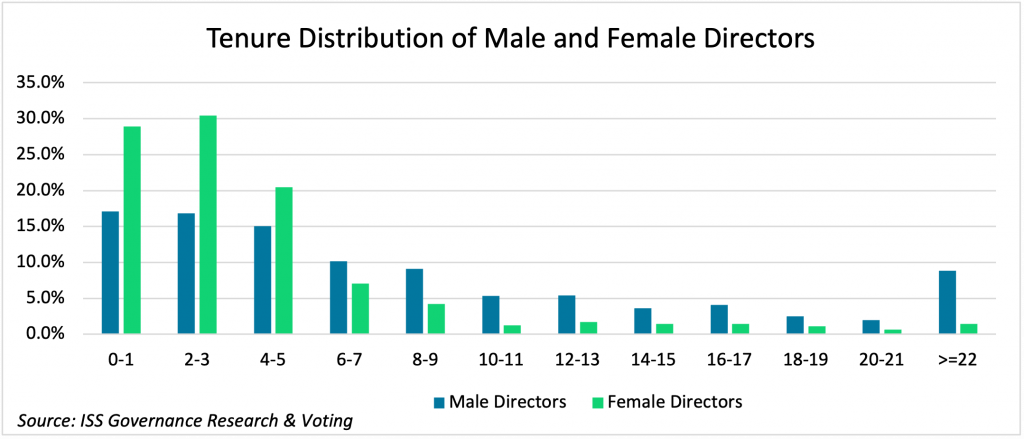
As indicated in the graph below, the median tenure for male directors is consistently higher than that of female directors across all markets. Argentina has the smallest gap, at only one year, while the median tenure for male directors in Mexico is three times higher than that of female directors.
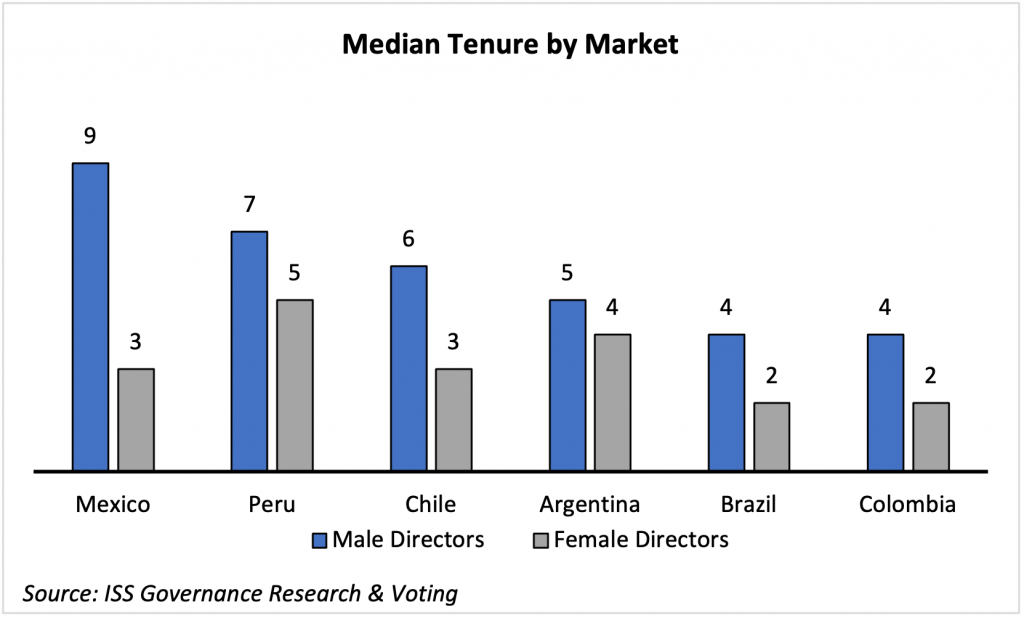
Conclusion
In Latin America, data shows that the election of female directors has been leading to greater board refreshment through the introduction of younger, independent, and less tenured directors compared to their male counterparts.
While female directors currently hold only 16 percent of directorships in the Latin American countries covered by ISS, they represent 23.5 percent of the independent board members in these respective markets, indicating an important aspect of improved corporate governance practices. Nevertheless, female participation on Latin American boards remains relatively low, as further discussed in the recently published ISS paper Gender Diversity in Latin American Boards: Progress at a Slow Pace. Continued market efforts to increase board diversity are expected to drive further improvements in the region’s corporate governance landscape.
By: Ana Luiza Farias, John Reidy
